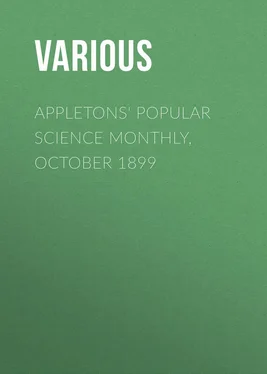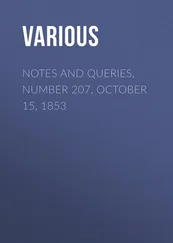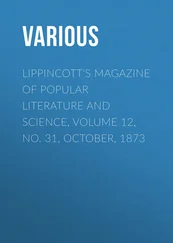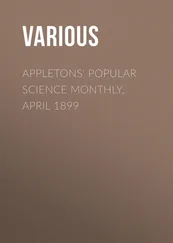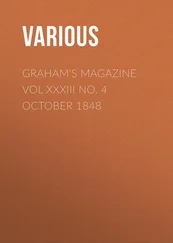Various - Appletons' Popular Science Monthly, October 1899
Здесь есть возможность читать онлайн «Various - Appletons' Popular Science Monthly, October 1899» — ознакомительный отрывок электронной книги совершенно бесплатно, а после прочтения отрывка купить полную версию. В некоторых случаях можно слушать аудио, скачать через торрент в формате fb2 и присутствует краткое содержание. Издательство: Иностранный паблик, Жанр: periodic, foreign_edu, на английском языке. Описание произведения, (предисловие) а так же отзывы посетителей доступны на портале библиотеки ЛибКат.
- Название:Appletons' Popular Science Monthly, October 1899
- Автор:
- Издательство:Иностранный паблик
- Жанр:
- Год:неизвестен
- ISBN:нет данных
- Рейтинг книги:3 / 5. Голосов: 1
-
Избранное:Добавить в избранное
- Отзывы:
-
Ваша оценка:
- 60
- 1
- 2
- 3
- 4
- 5
Appletons' Popular Science Monthly, October 1899: краткое содержание, описание и аннотация
Предлагаем к чтению аннотацию, описание, краткое содержание или предисловие (зависит от того, что написал сам автор книги «Appletons' Popular Science Monthly, October 1899»). Если вы не нашли необходимую информацию о книге — напишите в комментариях, мы постараемся отыскать её.
Appletons' Popular Science Monthly, October 1899 — читать онлайн ознакомительный отрывок
Ниже представлен текст книги, разбитый по страницам. Система сохранения места последней прочитанной страницы, позволяет с удобством читать онлайн бесплатно книгу «Appletons' Popular Science Monthly, October 1899», без необходимости каждый раз заново искать на чём Вы остановились. Поставьте закладку, и сможете в любой момент перейти на страницу, на которой закончили чтение.
Интервал:
Закладка:
The journey from Winslow to Oraibi is not without great interest. The beautiful snow-capped peaks of the San Francisco Mountain are always in sight far away to the west, and when the eye tires of the rigid and immovable desert their graceful outlines check the often rising feeling of utter helplessness. Then there is a sweep and barrenness of the plain which is impressive and often awe-inspiring, and which at times produces a feeling similar to that created by the sea. Save for the stunted cottonwoods along the Little Colorado River, there is scant vegetation to relieve the bright reds, yellows, and blues of the painted desert over which the sun's heat quivers and dances, revealing here and there mirages of lakes and forests of wonderfully deceptive vividness. Arising out of the plain here and there are brief expanses of table-lands, with the soft under strata crumbled away and the higher strata having fallen down the sides, producing often the appearance of a ruined castle. At the foot of the mesas are clumps of sagebrush and grease wood, while the plain is dotted here and there with patches of cactus and bright-colored flowers. Foxes and wolves are common enough, and we are rarely out of sight or sound of the coyote, bands of which make night hideous with their shrill, weird cry.
Although the Navajo country proper is to the north and east of Tusayan, their hogans , or thatched-roofed dugouts, are met with here and there along the valley of the river. The Navajos are the Bedouins of America. We often see the women in front of the hogans weaving, or the men along the trail tending their flocks of sheep and goats, for they are great herders and produce large quantities of wool, part of which they exchange to the traders; the remainder the women weave into blankets, which are in general use throughout the Southwest and which find their way through the trade to all parts of the relic-loving world. They raise, in addition, great quantities of beans, which they also send out to the railroad. They are better supplied with ponies than the Hopi, and with them make long journeys, for the Navajos do not live a communal life as do the pueblo people, but are scattered over an extensive territory, each family living alone and being independent of its neighbors.
After a long and tiresome journey of four days we arrive at the foot of the mesa and begin the long, upward climb, for Oraibi is eight hundred feet above the surrounding plain and seven thousand feet above the level of the sea. Just before the crest is reached the trail for fifty or more feet is simply a path along and up the base of a rocky precipice, its steps worn deep by the never-ending line of Indians passing to and fro. Once upon the summit we have an unobstructed view over the dry, arid, sun-parched valleys for many miles – a view which, in spite of its desolation, is extremely fascinating.
We often speak of this or of that town as the oldest on the continent. But here we are in the streets of a town which antedates all other cities of the United States – a pueblo which occupied this very spot when, in 1540, Coronado halted in Cibola and sent Don Pedro de Tobar on to the west to explore the then unknown desert. Imagine seven rather irregularly parallel streets about two hundred yards long, with here and there a more open spot or plaza, lined on each side with mud-plastered, rough-laid stone houses, and you have Oraibi. The houses rise in the form of terraces to a height of two or three stories. As a rule there is no opening to the ground-floor dwellings save through a small, square hatch in the roof. Leading up to this roof are rude ladders, which in a few rare instances are simply steps cut in a solid log, differing in nowise from those found leading into the chambers of the old cliff ruins of southern Colorado. The roof of the first row or terrace of houses forms a kind of balcony or porch for the second terrace, and so the roof of the second-story houses serves a similar useful purpose for the third-story houses.
Two things impress one on entering a Hopi home for the first time – the small size of the rooms, with their low ceilings, and the cleanness of the floors. Both floors and walls are kept fresh and bright by oft-renewed coats of thin plaster, which is always done by the woman, for she owns the house and all within it; she builds it and keeps it in repair. The ceiling is of thatch held up by poles, which in turn rest on larger rafters. Apart from the mealing bins and the piki stones, to be described later, there is no furniture – no table, no chairs, no stools, simply a shelf or two with trays of meal or bread, and near the wall a long pole for clothing, suspended by buckskin thongs from the rafters. Their bed is a sheepskin rug and one or two Navajo blankets spread on the floor wherever there may be a vacant space. In one corner may be a pile of corn stacked up like cordwood, and in another corner melons or squashes and a few sacks of dried peaches or beans. Between the thatch and rafters you will find bows and arrows, spindles, hairpins, digging-sticks, and boomerangs, and from the wall may hang a doll or two, children's playthings. Such is an Oraibi home; but it always seems a happy home, and the traveler is always welcome.
A prominent feature of almost every pueblo plaza is a squarish, boxlike elevation which extends about two feet above the level of the earth and measures about six feet in length, with a two-foot hole in the center, from which projects to a considerable height the posts of a ladder. If you descend this ladder you will find yourself in a subterranean chamber, rectangular in shape, and measuring about twenty-five feet in length by about fifteen feet in breadth, with a height from the floor to the ceiling of about ten feet. This underground room is the kiva , or the estufa of the Spaniards. Here are held all the secret rites of religious ceremonies, and here the men resort to smoke, to gossip, to spin, and weave. The floor, to an extent of two thirds of the entire length, except for a foot-wide space extending around this portion, is excavated still farther to a depth of a foot and a half. The remaining elevated portion is for the spectators, while the banquette around the excavation is used by the less active participants in the ceremonies. Just under the hatchway and in front of the spectators' floor is a depression which is used as a fire hearth. The walls are neatly coated with plaster, and the entire floor is paved with irregularly shaped flat stones fitted together in a rough manner. There is sometimes inserted in the floor, at the end removed from the spectators, a plank with a circular hole about an inch and a half in diameter; this hole is called the sipapu , and symbolizes the opening in the earth through which the ancestors of the Hopi made their entrance into this world. The roof of the kiva is supported by great, heavy beams, which are brought from the San Francisco Mountain with infinite trouble and labor. In Oraibi there are thirteen kivas, each probably in the possession of some society, one of which belongs to women, who there erect their altar in the mamzrouti ceremony. Oraibi has the largest number of kivas of any of the Hopi pueblos; in a single plaza there are no less than four kivas. This plaza is on the west side of the village, and one of the kivas is of special interest, for in it are held the secret rites of the weird snake ceremony. A little to the west of this plaza is a small bit of the mesa, standing apart and separated from the main mesa by a depression. This is known as "Oraibi rock," whence the pueblo takes its name. The etymology of this name "Oraibi" is lost in a misty past, but the rock is still held in great veneration. On it stands a rude shrine, where one may always find sacrificial offerings of prayer-sticks, pipes, sacred meal, cakes, etc.
Читать дальшеИнтервал:
Закладка:
Похожие книги на «Appletons' Popular Science Monthly, October 1899»
Представляем Вашему вниманию похожие книги на «Appletons' Popular Science Monthly, October 1899» списком для выбора. Мы отобрали схожую по названию и смыслу литературу в надежде предоставить читателям больше вариантов отыскать новые, интересные, ещё непрочитанные произведения.
Обсуждение, отзывы о книге «Appletons' Popular Science Monthly, October 1899» и просто собственные мнения читателей. Оставьте ваши комментарии, напишите, что Вы думаете о произведении, его смысле или главных героях. Укажите что конкретно понравилось, а что нет, и почему Вы так считаете.
